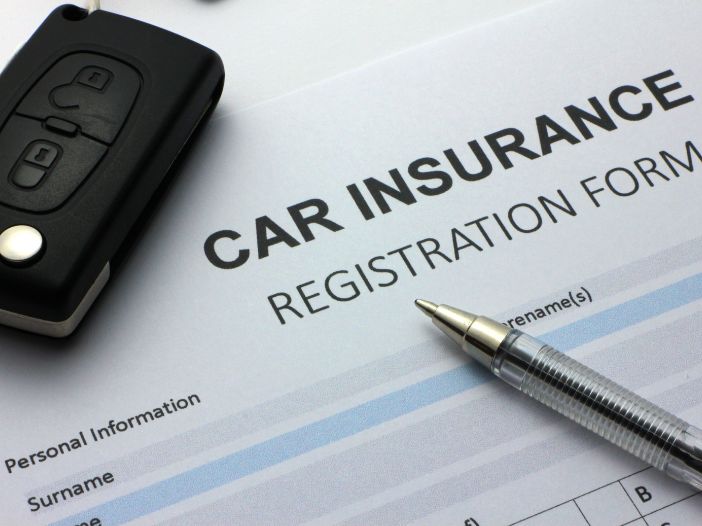Are you an insurance agent looking for a more effective way to market your products and services?
If so, you should consider one of the most effective digital marketing strategies, Facebook Ads.
Facebook Ads are more effective for new customers as well as existing customers than any other advertising medium unless the market demands a more targeted approach. And since nearly 2 billion people worldwide use Facebook, the potential reach of your Ads is huge.
But Facebook ads can be a waste of money if they’re not done correctly. That’s why it’s essential to understand how to create effective ads that will reach your target audience and convert them into customers.
Nowadays, you have to approach ads differently based on the way consumers interact with each stage of their life insurance journey.
To create an effective Facebook Ad campaign, you need to:
- Understand your target audience
- Set clear goals for your campaign
- Choose the correct ad format
- Write compelling copy
- Use high-quality visuals
If you can do all of these things, you’ll be well on your way to creating a successful Facebook Ad campaign that will help you grow your business.
Inside this article, we’ll help you do just that!
How Facebook ads for insurance agents expand your reach
Facebook attracts large audiences and can help insurance agents scale a successful advertising campaign. For example, 28% of people in their 40s and 60s use social media for insurance research and purchases, while 29% are Facebook users.
Most Facebook users — about 70.9% of them are adults. Many people could be reached through your Facebook insurance marketing campaigns on this site.
What’s more, Facebook marketing for insurance agents can also help you target a specific audience. For example, with selling life insurance, you can target people in your area who are in their 40s and 50s — the prime age for buying life insurance.
Or another example of using Facebook for life insurance marketing would be to target people who have recently had a significant life event, such as getting married or having a baby.
You can also use Facebook marketing for insurance agents to upsell current customers or cross-sell different types of insurance products.
For example, suppose you sell health insurance too. In that case, you can target your existing customers by discussing why it is vital to have health coverage and life insurance to protect the family’s finances.
As you can see, there are many benefits to using Facebook marketing for insurance agents. Now let’s take a look at setting up your ad campaign.

Facebook Ads Campaign Basics
While Facebook provides a way to advertise with your current customers, Facebook Ads gives you more exposure because your content will be seen by those users that don’t follow you. The ads are similar to any other post in a timeline but are tagged “sponsored.”
Your ad will appear on the right-hand side of the Facebook page for desktop users and in mobile users’ News Feeds. In addition, ad placements can be customized to fit your marketing goals.
For example, if you want more video views, you can place your ad in the News Feed, where it is more likely to be seen. If you want more clicks to your website, you can place your ad in the right-hand column, where it will be more noticeable.
Here are some things to keep in mind so you can utilize your Facebook ads manager in a way that will actually bring you an ROI.
Niche down Your Targeting
Most people pick as many of the appropriate targets when running an ad. However, this is a significant mistake commonly made in the insurance business.
Instead of picking multiple targets, run a different campaign for each so you can get more accurate data on what works and what doesn’t.
For example, if you want to target people in their 40s and 50s, create a campaign specifically for that age group. Then, create separate campaigns for other demographics like gender, location, interests, and behaviors.
The key is to start small and expand your targeting once you know what works.
Ask Qualifying Questions
You should also make sure you ask qualifying questions on lead forms. While it’s essential to gain lots of leads, it’s also necessary to ensure you don’t waste your time calling bad insurance leads.
For example, you can ask questions like “Are you currently in the market for life insurance?” or “What is your budget for life insurance?”
This will help you weed out people who are not actually interested in buying life insurance, and it will also give you an idea of what they’re looking for so you can better tailor your sales pitch.
Tell them something
Another good practice for displaying ads is showing a fact or providing helpful information. These may be statistics or insider industry details about the products that the customer may be unaware of.
Split test everything
Split testing (also called A/B Testing) uses one variable at a time to test the impact of an ad. The trick is to test one thing and then choose a winner. Next, test one other thing and rinse and repeat until you have the best possible campaign performance.
Instant gratification
You will be much more likely to get leads if you can give your audience instant access to something of value.
Make it something specific that you know your prospective customer would want. Don’t just go for a generic eBook and end up paying for insurance leads that just want the free information.
9 Steps to creating your insurance facebook ads
1. The Objective
Facebook advertising offers customized solutions for various marketing objectives. Focus on delivering customized output that drives good ROI.
2. The audience
Developing a targeted market is very important, and it helps improve lead conversions. The deeper you understand and narrow down your target audience, the more effective your Facebook insurance marketing campaigns will be.
3. The Message
Convincing someone to purchase life insurance is not an easy task. You need to have a compelling message that will make them understand the importance of having life insurance.
4. Placement of the Advertising
Facebook recommends using its Automatic placement services, but it is not the most efficient method to start with for your ads. Start by selecting Feeds.
Facebook is the most popular app that users are used to viewing feeds from their mobiles and laptops daily. Then, you can gradually expand your placements to other networks like Instagram, Messenger, and Audience Network.
5. The Budget
Facebook insurance ad costs are dependent on advertising and performance in relation to the target audience and the specific interest. Facebook insurance ads generally range from $100 to $500 per day.
It would be best to start by allocating a budget that you are comfortable with and gradually increasing it over time. Starting with $10 a day is just fine.
6. The Format of your Facebook Insurance Ads
By creating Facebook ads, life insurance agents have several formats available. This provides a way to tailor an insurance Facebook ad campaign to suit your target audience.
The format options are:
- Carousel: This format is suitable for showcasing multiple products or services.
- Single image: Great for promoting a single product or service.
- Slideshow: A short video ad that uses still images.
- Video ads: A more extended video ad that tells a story.
It would be best to test ads across all formats to see which performs the best.
7. Use a Call-to-Action
Your ad should also have a call-to-action (CTA) that tells people what you want them to do, such as “Get a Quote” or “Learn More.”
Make sure your CTA is clear and concise and stands out from the rest of your ad. Also, make sure your CTA is relevant to the rest of your ad. For example, if your ad is about life insurance, don’t have a CTA that says “Buy Now.”
8. Have a strong Facebook Business Profile
Insurance agencies and agents that are using Facebook to generate leads need to have a complete and up-to-date business profile.
This will ensure that if the prospect decides to go to your profile first instead of clicking your Facebbook ad they will see a well established business.
To do this, add the following information to your profile:
To set up your Facebook Business profile:
- Go to facebook.com/business and click “Create a Page.”
- Select the “Local Business or Place” category.
- Fill out your About section completely, including your business description, website URL, and contact information.
- Upload photos and videos of your business.
- Choose a call-to-action button, such as “Request a Quote” or “Contact Us.”
- Add a cover photo and profile picture that represents your business.
- Start adding consistent helpful content to the page so it’s not empty.
9. Review Progress
After your Facebook coverage campaign is up and running, you may assess and evaluate the performance of your Facebook postings.
For example, when there are many different Facebook insurance advertisements at the same time, you can pick one and then ‘View chart’ to see specific metrics for that Facebook ad.

Targeting Strategies For Facebook Marketing
You can have the best-looking Facebook ad with the best ad copy in the world, but it will not make a difference if you are not targeting the right people.
Here are some strategies that you can use to make sure your Facebook marketing targets the right people:
Set up Lookalike audiences
You can target an existing group of customers or website visitors with similar characteristics to them by setting up a Lookalike audience on Facebook.
To do this, go to the Audiences section of Facebook Ads Manager and click on the “Create Audience” drop-down menu.
Select “Lookalike Audience,” and then choose your source audience.
You can also specify the location, age range, and gender of the people you want to target.
Use Custom Audiences
Facebook lets you target people by allowing you to create a Custom Audience.
This can be done by uploading a list of customer email addresses, phone numbers, or other information.
Facebook will then match this information with people’s Facebook profiles and show your ads to them.
To create a Custom Audience, go to the “Audiences” section of Facebook Ads Manager and click on the “Create Audience” drop-down menu.
Select “Custom Audience,” and then choose how you want to build your audience.
Interest targeting
Once you develop a solid understanding of your niche, you can target people based on their interests.
To do this, go to the “Interests” section of Facebook Ads Manager and type in some interests that are relevant to your business.
You can also use the “Detailed Targeting” option to get more specific with your targeting.
Maybe you find your niche is also interested in certain types of financial products or services. You could target those as well.
Retargeting pixel
Take out the guesswork and save ad costs by using a retargeting pixel on your website.
A retargeting pixel is a piece of code that you can put on your website.
Once it’s there, it will track the people who visit your site and then show your ads to them as they browse Facebook.
This is an extremely effective way to target potential customers because you know they are already interested in what you have to offer.
To create a retargeting pixel, go to the “Pixels” section of Facebook Ads Manager and click on the “Create Pixel” button.
Then, follow the instructions to add the code to your website.
Life Events
You can also target people based on life events that might make them interested in your product or service.
To do this, go to the “Life Events” section of Facebook Ads Manager.
You can then select the type of event you want to target and the timeframe.
For example, if you are wanting to reach new families, you can target women and men interested in engagement rings or newlyweds.
Facebook Ad Design Tips
Your ad design must stand out to capture the attention of potential customers scrolling through their Facebook newsfeed.
Remember, they are there to socialize, not to be sold to.
Here are some tips for creating effective Facebook Ads for life insurance agents:
The title is the most critical aspect of your ad design.
Your title is what will catch people’s attention as they scroll down their newsfeed. The title should be short, snappy, and to the point. It should sum up what you’re offering in a few words.
For example:
“Get a quote for life insurance in 2 minutes.”
“Buy life insurance, and we’ll donate $10 to charity.”
“Life insurance from as little as $5 a month”
The description is where you elaborate on your offer.
The description is where you go into more detail about what you’re offering. This is your chance to elaborate on the benefits of your product or service.
Make sure your description is clear and concise and that it furthers the message of your ad.
Have captivating visuals
Clicking publish on your ad is not enough. You need to have visuals that are eye-catching and relevant to your offer.
Your visuals should be high quality and support the message of your ad.
Make sure they are not too busy or cluttered, as this will only serve to distract potential customers from your offer.
Add text to images
Facebook does not permit displaying more than 20% of text on your images. So if you want to use text on your images, make sure it takes up no more than 20% of the image.
This can be a difficult balance to achieve, but it’s important to remember that Facebook favors ads with little or no text on them.
If you’re having trouble meeting the 20% rule, try using a free tool like the Facebook Grid Tool to help you determine how much text is on your image.
Once you figure out the proper text placement, you can create templates with free tools like Canva to make this easier for future ads.
Create Videos that Convert
The use of video in advertising is not new, but it is constantly evolving. Adding a video to your ad has the potential to increase conversion rates by as much as 80%.
When people see a video, they’re more likely to stop and watch, which gives you an opportunity to get your message across. The key to a compelling video is to make it interesting and relevant to your target audience.
You need to capture their attention in the first few seconds; otherwise, they’ll scroll right past your ad.
For example, start your video like this:
“Give me 60 seconds, and I’ll tell you how you can benefit just like the wealthy with life insurance.”
This is a great way to get people’s attention and let them know what they can expect from your video.
Once you have their attention, it’s essential to keep them engaged by making your video interesting and informative.
You could tell a story about how someone used life insurance to protect their family’s wealth or how someone used their policy while they were living to get lump sums of cash tax-free for whatever.
Whatever story you choose to tell, make sure it’s relevant to your target audience and that it highlights the benefits of life insurance.
This is a great way to connect with potential customers and let them know how your product can benefit them.
Finally, your video should end with a call to action, telling viewers what you want them to do next.
Keep your videos under 2 minutes, as people’s attention spans are shorter than ever.
The Importance of your Facebook Pixel
Setting up your Facebook pixel is key to creating optimized ads. The Facebook pixel is a code that you place on your website. Here is a guide from Facebook that’ll show you how to set up your pixel.
Here are the benefits of making sure your pixel is set up correctly:
Track conversion rates
The pixel will track how many people who saw your ad ended up buying a policy from you. This is important to know so you can see if your marketing campaign is working or not.
Create lookalike audiences
Once the pixel has enough data, you can create “lookalike audiences.” Lookalike audiences are people on Facebook who have similar interests and demographics to your current customers.
This is important because you can then target your ads to this new audience and hopefully get more business.
Remarketing
The pixel also allows you to do something called “remarketing.” Remarketing is when you show ads to people who have already visited your website.
For example, let’s say someone comes to your website and reads an article about life insurance but doesn’t buy a policy from you. The pixel will put that person in a group you called “people who visited our site but didn’t buy anything.”
You can then create an ad specifically for that group of people, trying to get them to come back and buy a policy.
Custom conversions
You can also use the Facebook pixel to track “custom conversions.” Custom conversions are different from regular ol’ conversion tracking because you can choose what counts as a conversion.
For example, let’s say you want to track how many people fill out a quote form on your website. Then, you can create a custom conversion for that and track how many people take that action.
Then, you can create an ad specifically for people who didn’t fill out the form and try to get them to take that action.
Custom conversions are a great way to track specific actions people take on your website so you can optimize your ads for those actions.
The Facebook pixel is a powerful tool that every insurance agent should be using. You’re missing out on potential customers and sales if you’re not using it.
Wrapping up
When you first log in to your Facebook ads manager, setting up your first Facebook ad can feel a little intimidating. Therefore, it is recommended that you reach out to someone specializing in Facebook advertising.
You can run through your Facebook ad spend very quickly and will not generate leads if you have no idea how to set up, create, and optimize a Facebook campaign.
If you go after creating Facebook ads for your insurance agencies, follow the tips mentioned above for the best results.





